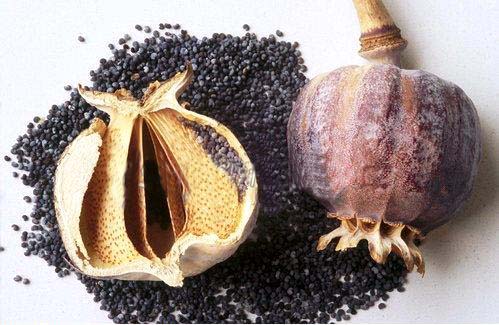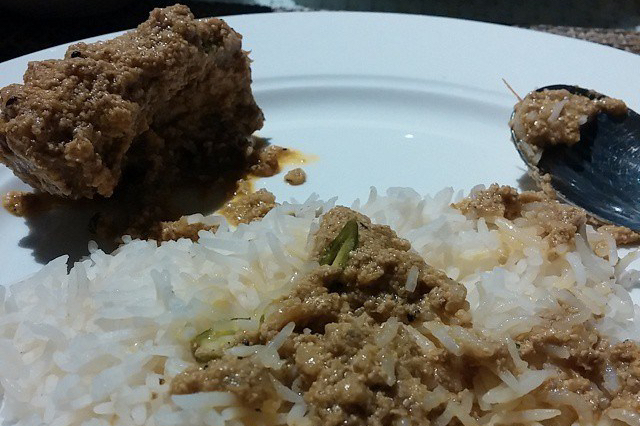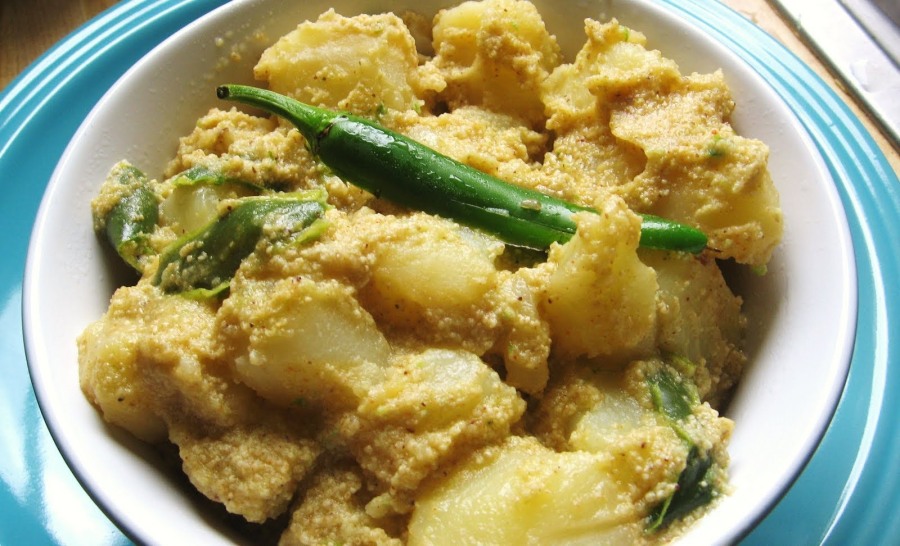Yesterday, one of my friends, Aranjit shared a picture of a dish, which he prepared for his son, in our WhatsApp group. It was a chicken dish cooked in opium poppy (Papaver somniferum) seed curry. Posto (or, the opium poppy-seed) is one of my favourite dish, in any combination. Well, ask any Bengali and he or she will confirm that পোস্ত (posto) is one of the most loved Bengali delicacies. On a lazy weekend, I was wondering how can a residual by-product of the opium plant become a popular ingredient in the Bengali kitchen?
HISTORICAL BACKGROUND
The poppy seed is mentioned in ancient medical texts from many civilisations. For instance, the Egyptian papyrus scroll named Ebers Papyrus, written c. 1550 BCE, lists poppy seed as a sedative. The Minoan civilisation (c. 2700 to 1450 BCE), a Bronze Age civilisation which arose on the island of Crete, cultivated poppies for their seed, and used a milk, opium and honey mixture to calm crying babies. The Sumerians are another civilization that are known to have grown poppy seeds. Poppy seeds have long been used as a folk remedy to aid sleeping, promote fertility and wealth, and even to provide supposed magical powers of invisibility.
The poppy-seed also has a long relationship with India, not as a gourmet ingredient but as a medicinal plant. As remedy for a number of ailments, it finds mention in the Dhanvantari Nighantu — a treatise on the medicinal plants & their pharmacological actions attributed to Lord Dhanvantari. Commonly worshipped as the God of Medicine, Dhanvantari is regarded as the origin exponent of Indian medicine. He taught surgery and other divisions of Ayurveda (Indian system of medicine) at the instance of Sushruta, to a group of sages among whom Sushruta was the foremost. That was at the time of the beginning of the Common Era.

Opium slowly took on the form of a recreational drug during the reign of the Mughal emperor Akbar. Its cultivation was stepped up by royal diktat, and the beautiful crimson flower found a special place as well in royal textile motifs.
Whole poppy seeds are widely used as a spice and decoration in and on top of many baked goods. Fillings in pastries are sometimes made of finely ground poppy seeds mixed with butter or milk and sugar. In Indian cuisine white poppy seeds are added for thickness, texture and also give added flavour to the recipe. White poppy seeds, called Posto, are used as the main ingredient in a variety of Bengali dishes.
The tiny dried white seeds formed after the drug had been extracted from the latex of the poppy-seed pods were non-narcotic and crept into the royal kitchens primarily as a texture enhancer and thickener for gravies. The story may have ended there had not the British discovered the huge market for illegal opium in China soon after the Battle of Plassey in 1757, which is when they first set up their base in Bengal. Overnight huge tracts of agricultural land in the Bengal Presidency were transformed into rolling poppy fields and while the native farmer lamented the death of golden harvests, the British raked in a crimson booty.
By the turn of the 20th Century, Britain had become the biggest drug dealer the world had ever known, and China had developed the biggest drug problem experienced by any nation ever. According to official figures, in 1906, 23.3% of the adult male Chinese population was addicted to opium.
EVOLOUTION OF A DISH IN BENGALI KITCHEN
Robbed of the produce that fed the family — a miserable state compounded by the opium-induced stupor of her husband — the farmer’s wife looked for ways to supplement the meagre meals put together by foraging in forests, ponds and groves. The enormous amounts of dried out poppy-seed, left as waste by the colonial masters, suddenly took on an important role. She experimented with it and found much to her delight that the seeds when ground to a paste exuded a nutty flavour, blended well with mustard oil and enhanced the frugal meals of পান্তা ভাত (panta bhaat) — leftover rice soaked in water, or boiled potatoes. In the intense dry heat of the area, it also cooled the body. Thus was born the Bengali’s cherished posto.

Recipes featuring posto are aplenty today as it entered the urban kitchen and range from fritters, aloo-posto (potatoes in poppy-seed paste), kancha posto bata (raw poppy-seed paste) to murgi-posto (chicken in poppy-seed paste), dim-posto (egg in poppy-seed paste), and rui-posto (fish in poppy-seed paste).
The story of posto is the story of the drug trade, exploitation and the Opium Wars, and eating posto is just the tip of an entire culinary repertoire born out of waste. Much like how the once humble pate or foie gras, made by European peasants from animal offal for protein and warmth in bitter winters now occupies pride place on fine dining tables.


I love posto – it has an interesting history too.
LikeLiked by 1 person
My favourite is Dim-Posto that my sister prepares, it is very simple but awesome taste.
LikeLiked by 1 person
I love posto in each type of its preparation, right from simple posto bata. 😀
LikeLiked by 1 person
Thanks for sharing the history of ‘posto’. It’s really Bengali’s one of the all time favourites! Alu posto’r chhobi dekhe jiv-e jol eshey gyalo… 😛
LikeLiked by 1 person
Thanks Maniparna 😀
LikeLiked by 1 person
Hi,
Congratulations! Your blog post was featured in the Tangy Tuesday Picks edition on April 05, 2016 at Blogadda.
Please find it here:
LikeLiked by 1 person
Interesting…I never knew, can’t remember if I have eaten posto in Kolkata last year…hmm. But seeing your food pics making me hanker for Indian food tonight! 🙂
LikeLiked by 2 people
I’m doubtful whether you will get it outside India and Bangladesh. But do savour it in your next visit.
LikeLiked by 1 person
Thanks for making me learn about dishes in another part of the world far away from me.
LikeLiked by 1 person
Thanks Ngobesing for your visit and liking the post.
LikeLiked by 1 person
wonderful!
LikeLiked by 1 person
Thanks sir.
LikeLike
Pingback: Bengali Bites: Posto – WINGSPAN